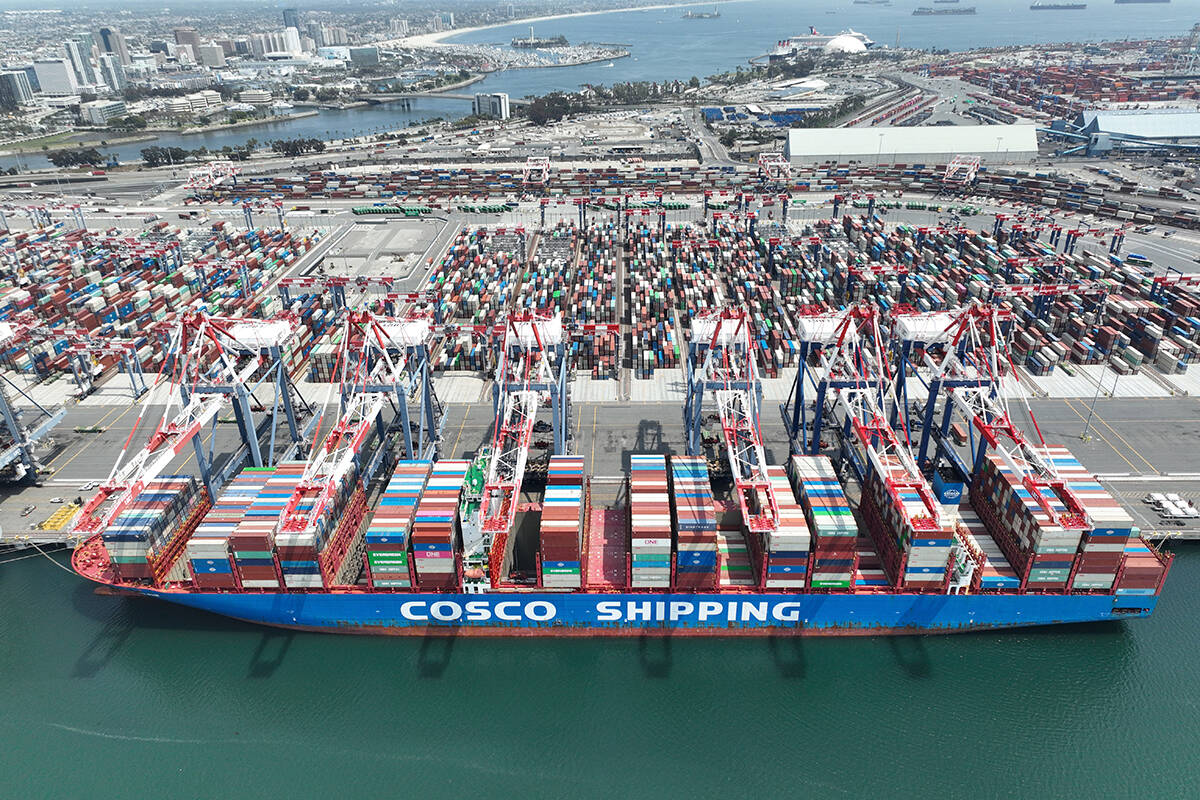Beef profitability improving | Producers are seeing positive margins, but aren’t making moves to expand operations
High profitability is not persuading beef producers to add cows to their herds.
Brian Perillat of Canfax says it is probably the result of low long-term profits and the fact that there are more profitable ways to use an acre of prairie land than grazing or growing hay.
“They have seen some positive margins, but what’s the real incentive to grow cattle versus grain,” said Perillat in a presentation at Manitoba Ag Days.
Grain has been more profitable, he added.
More “has been on the grain side.”
Read Also

U.S. softens fees on Chinese shipping
The U.S. starts charging new fees on Chinese ships on Oct. 14. What are the ramifications for their ag exports?
American farmers have begun rebuilding their herds, which shrank during the years of high grain prices and consecutive droughts, but Canadian farmers have not. However, the present slump in feedgrain prices and continuing high beef prices could push more cows and heifers into production this year, he said.
“This is going to be the big factor in 2014, 2015,” said Perillat.
Record high retail beef prices have allowed packers to demand high prices from grocery stores. As well, cattle feeders have been able to demand high prices from packers and cow-calf producers have been able to demand high prices for calves.
Profitability for cow-calf producers was good last year, despite high feedgrain prices, because of high beef prices. However, the profitability picture is much better now that barley and corn prices have slumped.
“This is an exciting chart, unless you’ve got grain to sell,” said Perillat, sparking a wave of chuckles from farmers, about a price chart he showed of Lethbridge barley prices that have fallen from around $300 per tonne a year ago to about $175 now.
Cropland has for years produced much higher profits than cow-calf production, which has encouraged farmers to focus on growing crops and converting marginal hay and grassland into cropland.
Marginal land now appears to provide high beef profitability and losses for crop growers, but Perillat said the profit incentive to expand herds doesn’t appear to have provoked cattle producers yet.
Canfax estimates the herd is now 1.5 to two percent lower than it was a year ago, and recent bred cow sales in Alberta have not shown strong demand. As well, cow slaughter rates are high.
“Really, it’s a full-on liquidation, unfortunately, of the cow sector still,” he said of the recent 14.6 percent cow slaughter rate.
Beef producers have suffered immensely since the 2003 outbreak of BSE, not only from the massive market impact caused by closed borders but also by sky-high grain prices starting in 2006.
Last year’s temporary closure of the XL Foods slaughter plant in Brooks, Alta., didn’t help, creating a big discount to U.S. prices.
Many producers have been repairing their finances from those bad years as great prices for cows, heifers and calves encourage many of them to make sales.
However, Perillat said he’ll be watching this year to see if the new market signals reverse the trend of cuts to the cow herd.
“The signals are there, but the reactions aren’t there yet,” he said.
“I think it had as much as anything to do with grain prices and profitability.”

















